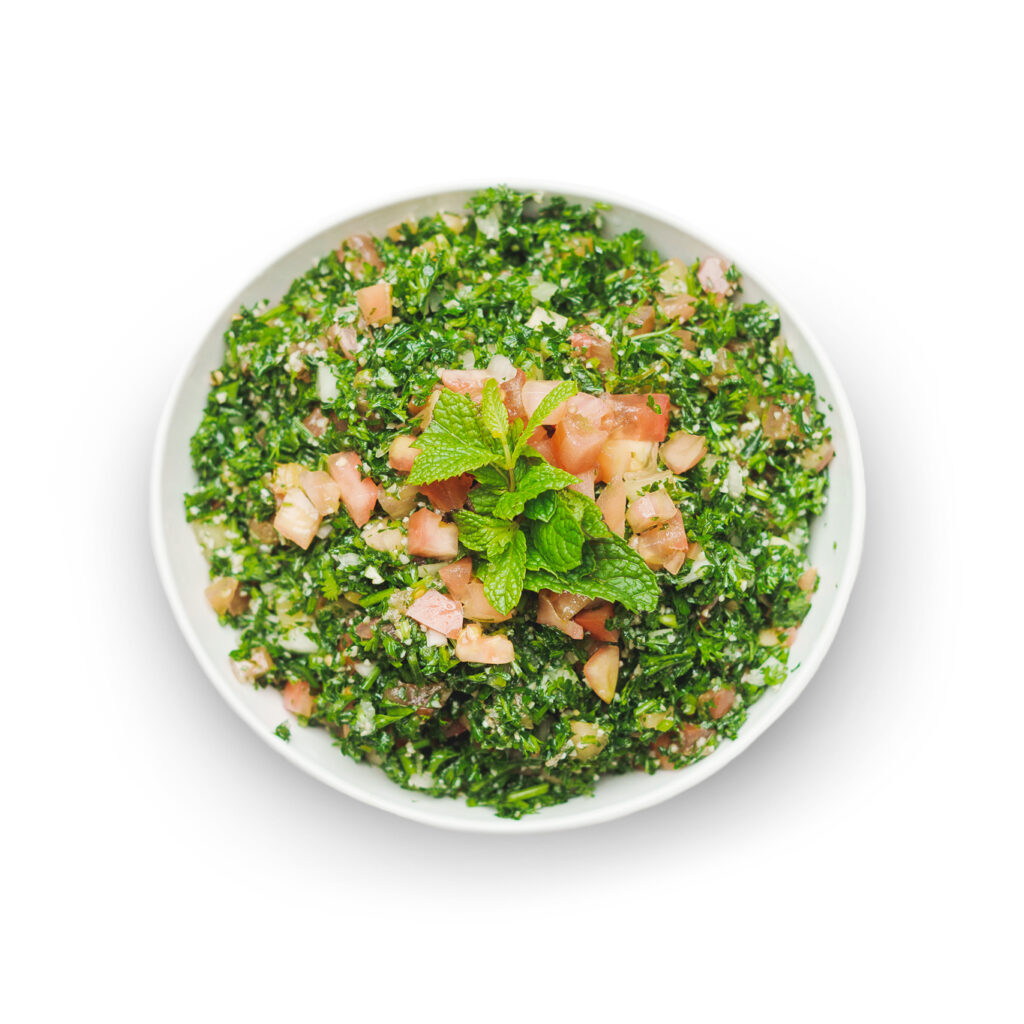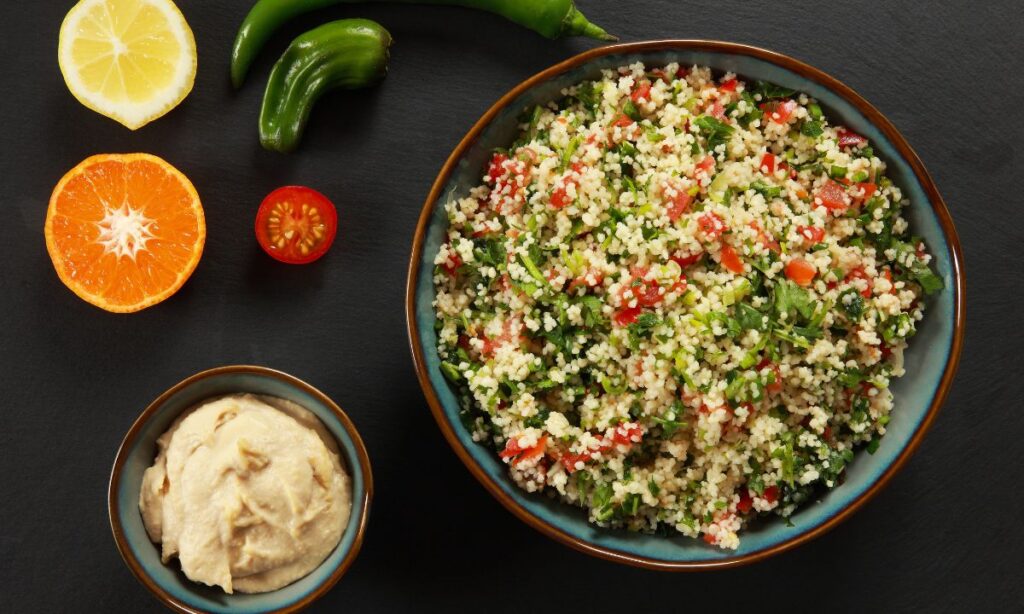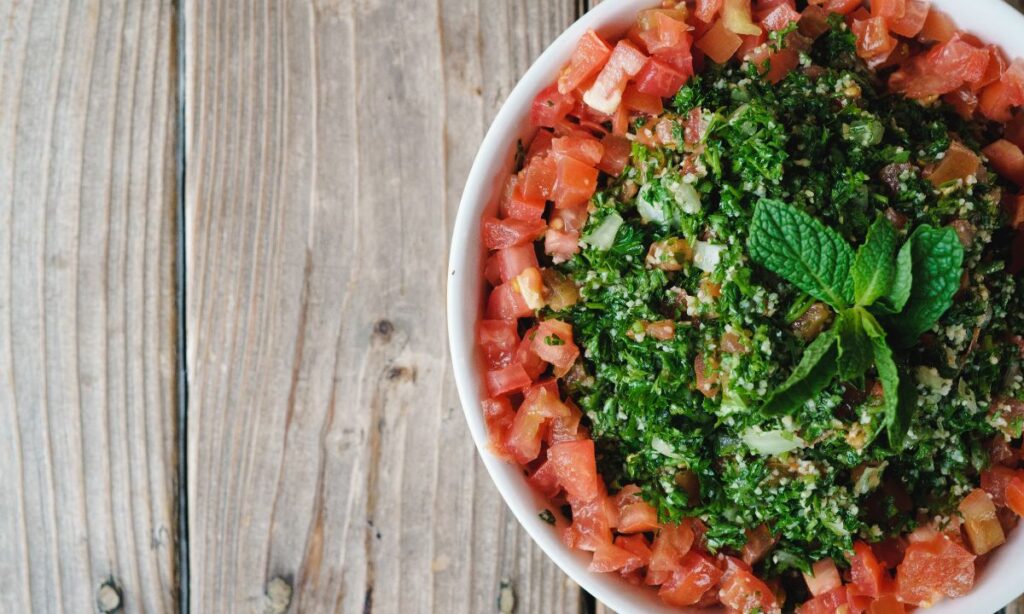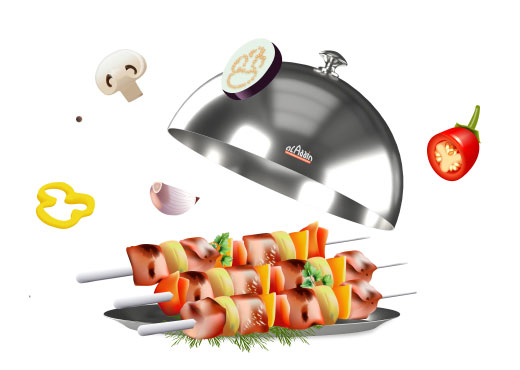Tabouli (also known as tabbouleh or tabouleh) is a vibrant, herbaceous salad that reflects the rich culinary traditions of the Middle East. If you’re looking for the perfect dish to complement your meal, a delicious Tabouli Salad is the way to go.
This dish, with its roots deeply embedded in the history of the Levantine region, is not just a meal but a celebration of fresh, wholesome ingredients.
In this comprehensive guide, we’ll explore the essence of tabouli, its origins, a classic recipe with detailed steps, and the historical journey that has made it a global favorite.
What Is Tabouli?
Tabouli is a traditional Middle Eastern salad known for its fresh ingredients and healthful qualities.

Tabouli or tabbouli or Tabbouleh – they all refer to the same dish. The variation in spelling arises from the transliteration of Arabic words into the Latin alphabet, where there’s often no single agreed-upon way to spell a word.
Tabouli is a vegetarian salad characterized by its fine chop and fresh flavor. It primarily consists of finely chopped parsley, tomatoes, mint, onion, and soaked bulgur wheat, all tossed with olive oil, lemon juice, salt, and pepper.
The dish is celebrated for its bright, lemony flavor and crisp texture. It is often served as part of a mezze platter or as a side dish to complement various main courses.
Origins and Cultural Significance
Tabouli hails from the Levantine region, which includes countries like Lebanon, Syria, Jordan, and Palestine.
Historically, tabouli was a part of the diet of rural communities in the mountains of Lebanon and Syria, where its ingredients were readily available. It’s believed that tabouli began as a way to utilize the abundant harvests of herbs and grains.

Over time, it evolved into a culinary symbol of the region, spreading across the Middle East and eventually gaining popularity worldwide.
A Classic Tabouli Recipe
Before diving into the recipe, it’s important to note that tabouli is all about freshness and quality of ingredients. Here’s a classic recipe that serves as a testament to tabouli’s enduring appeal.
Ingredients:
- 1 cup bulgur (fine grade)
- 2 bunches of fresh parsley, finely chopped
- 1/2 bunch of fresh mint, finely chopped
- 3 medium tomatoes, finely diced
- 1 small onion or 4 green onions, finely chopped
- Juice of 2 lemons
- 1/3 cup extra virgin olive oil
- Salt and pepper to taste
Instructions:
1. Prepare the Bulgur:
Place the bulgur in a bowl and cover it with boiling water. Let it soak for about 20-30 minutes until the grains are soft and fluffy. Drain any excess water and squeeze out the bulgur to remove moisture.
2. Chop the Herbs and Vegetables:
While the bulgur is soaking, finely chop the parsley, mint, tomatoes, and onions. The key to a great tabouli is in the fineness of the chop, which enhances the texture and allows the flavors to meld beautifully.

3. Mix the Ingredients:
In a large bowl, combine the drained bulgur, chopped parsley, mint, tomatoes, and onions. Toss them gently to ensure an even mix.
4. Dress the Salad:
Add the lemon juice and olive oil to the salad. Season with salt and pepper to taste. Mix well to coat every ingredient with the dressing.
5. Refrigerate:
Cover the bowl and let the tabouli sit in the refrigerator for at least an hour. This resting time intensifies the flavors, and the bulgur absorbs the dressing.
6. Serve and Enjoy:
Give the tabouli one last stir before serving. It can be enjoyed independently, as a refreshing salad, or as a side dish to complement meats, poultry, or fish.

The Essence of Tabouli: Freshness and Flavor
At the heart of tabouli is the celebration of freshness. The crispness of the parsley, the tanginess of the lemon, and the richness of the olive oil come together to create a nutritious and flavorful dish. It embodies the simplicity and wholesomeness of Middle Eastern cuisine, where the quality of ingredients speaks for itself.
Tabouli’s Global Journey
From its humble beginnings in the Levant, tabouli has embarked on a culinary journey across the globe. Its popularity in Western countries began to rise in the late 20th century, alongside growing interest in healthy and vegetarian diets.

Today, tabouli is a staple in Middle Eastern restaurants worldwide and has inspired various adaptations that cater to local tastes and ingredient availability.
Variations and Modern Interpretations
While the traditional recipe is revered, Tabbouleh has inspired countless variations. Some substitute quinoa or couscous for bulgur, appealing to gluten-free diets or personal preferences.
Others add cucumber for extra crunch or incorporate pomegranate seeds for a burst of sweetness.

These adaptations showcase Tabbouleh’s versatility and its ability to evolve with culinary trends.
Tabouli at Aladdin Houston
Among the myriad places to savor tabouli, Aladdin’s stands out for its authentic Lebanese twist on this classic dish.
Our tabouli is renowned for its freshness and vibrant flavors and the meticulous care with which it is prepared, ensuring a taste that transports you straight to the heart of Lebanon.

Aladdin’s chefs emphasize the traditional Lebanese ratio of parsley to bulgur, favoring a generous amount of the herb, which results in a greener, more flavorful salad.
Served alongside various Lebanese dishes, Aladdin’s tabouli complements the rich, aromatic flavors of the cuisine, making it a must-try for anyone seeking an authentic Middle Eastern dining experience. The dedication to authenticity and quality at Aladdin’s showcases why our tabouli is acclaimed as one of the best, embodying the essence of Lebanese culinary traditions.
If you are craving some delicious tabouli, you can order here.
FAQs
Can Tabbouleh be made in advance?
Yes, Tabbouleh can be made a day in advance. Letting it sit allows the flavors to meld together, enhancing its taste.
Is Tabbouleh gluten-free?
Traditional Tabbouleh contains bulgur, which is not gluten-free. However, a gluten-free version can easily be made by substituting bulgur with quinoa or gluten-free couscous.
How long does Tabbouleh last in the fridge?
Properly stored in an airtight container, Tabbouleh can last up to 3 days in the fridge. Remember, the fresher it is, the better it tastes.
Can Tabbouleh be frozen?
It’s not recommended to freeze Tabbouleh, as it can cause the fresh ingredients to become soggy and lose their vibrant flavor.
Conclusion
Tabouli is more than just a salad; it’s a vibrant expression of Middle Eastern culinary tradition. Its simplicity and depth of flavor have earned it a place at tables worldwide. Whether you’re a seasoned chef or a culinary novice, making tabouli invites you to explore the rich tapestry of Middle Eastern cuisine. Through this guide, we hope you’re inspired to embrace the refreshing taste of tabouli, a dish that beautifully captures the essence of its origins.



